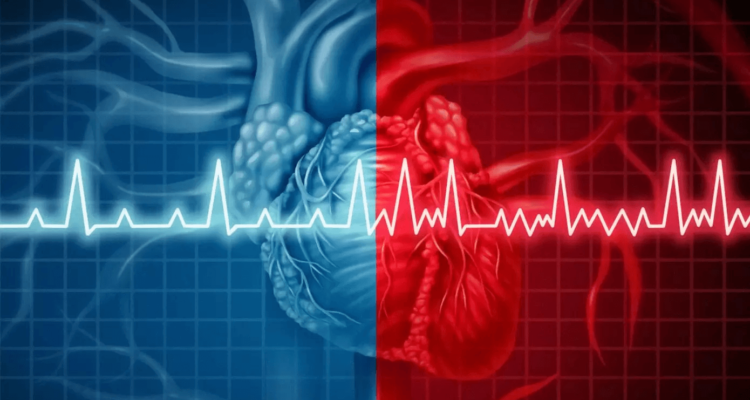
Can you break a heart? 7 facts about an important organ
0
Afraid of colds and strong emotions, and can still fight even after brain death.
1. The heart is not located in the left side of the chest
Although many “grab the heart” on the left side, the organ is not there. The heart is located in the middle of the chest between the right and left lungs. It is slightly tilted to the left, which creates a deceptive feeling. However, some people are born with dextrocardia – their organ is shifted to the right. Most often, there are no pronounced symptoms in this anomaly and the person leads a normal life.
Heart pain does not necessarily occur in the left side of the chest either. It can spread to the back, neck, jaw, shoulders and arms. And sometimes – similar to the pain that people feel during indigestion.
2. The heart can beat outside the body
The organ has its own electrical system that makes it contract and pump blood. Impulses are generated by the sinoatrial node – this is a special area located in the right atrium. It creates 60-100 stimuli per minute and distributes them throughout the conduction system. As a result, the heart continues to contract even after removal from the body or brain death, as long as oxygen is available.
Specialists have learned to keep the organ working for hours. For example, a few years ago, a 34-year-old man was transplanted with a heart that was outside his body for five hours. This became possible thanks to the “Heart in a Box” device. The donor organ is placed in a special box and tubes are attached to it that supply oxygen, blood and nutrients. Before the creation of such a device, organs were stored in a refrigerator with ice. This method allowed the heart to live for up to four hours.
3. You may not notice a heart attack
Although symptoms of coronary heart disease or heart attack often include chest tightness and shortness of breath, there are many other atypical symptoms. A person may experience fatigue, sweating, nausea, dizziness, pain in the neck or hands. Some people have no or very mild symptoms. Harvard researchers believe that “silent” heart attacks make up 45% of all cases. Manifestations can be so mild and short-lived that you simply write them off for other reasons. For example, decide that fatigue and poor sleep are caused by overwork.
A “silent” heart attack is not innocent at all. It increases the risk of a second heart attack, which can be fatal. If you feel constant fatigue, shortness of breath or heartburn, it is better to talk to a specialist. An electrocardiogram or an echocardiogram will help you know if you've had a heart attack.
4. Stress can really break a heart
Difficult experiences do cause the broken heart syndrome. A person feels severe chest pain and may think they are having a heart attack. The fact is that during stress, the body produces adrenaline. An excess of the hormone leads to the narrowing of small arteries and blood flow to the heart is temporarily reduced. Women, people over the age of 50, and patients with mental illnesses — such as depression or anxiety disorder — are most at risk of broken heart syndrome.
Most of the time, the matter is resolved without serious consequences. But there are also complications: pulmonary edema, low blood pressure or heart failure. Sometimes broken heart syndrome leads to death.
5. A person can live with two hearts
The Gallifreyan Doctor Who had two hearts, which allowed him to live even if one organ was damaged. People are not born with two hearts. But sometimes patients with cardiomyopathy can receive an additional organ as a result of surgery. Instead of transplanting a donor heart instead of a native one, the surgeon leaves both, dividing their work. The fact is that people with this diagnosis have very high blood pressure in the pulmonary artery, due to which the pressure in the lungs also increases. Therefore, you cannot simply replace a sick heart – a new one may not be able to withstand the load.
The operation is rare and is most often performed on children. There are known happy cases when such patients grow up and lead an active life.
6. Flu is dangerous for the heart
If a person has heart problems, he should be especially attentive to his condition during the cold season. Symptoms of respiratory disease are sometimes difficult from heart failure. And within a week after being diagnosed with the flu, the risk of having a heart attack increases sixfold. Elderly people and those who have already suffered a heart attack are most prone to it.
To prevent the flu, experts advise to get vaccinated annually. Vaccination will help not to get sick. And if you do catch the virus, it will reduce the risk of heart complications.
7. The heart never rests
It is a “superpump” that pumps oxygen-rich blood to every organ in the body every minute. The heartbeat in the fetus appears 5-6 weeks after conception, and then the organ does not stop until death. Every day, it contracts an average of 100,000 times and pumps about 7,500 liters of blood.
The organ cannot rest. If a person goes into cardiac arrest, they can die. This condition is caused by arrhythmia, heart attack, heart failure, injuries associated with large blood loss. Sometimes even people who have not been diagnosed with cardiovascular diseases are faced with a sudden “shutdown”. When the heart stops, a person faints, he has no pulse and no breathing. The patient can be saved only when he receives immediate treatment.









Leave a Reply